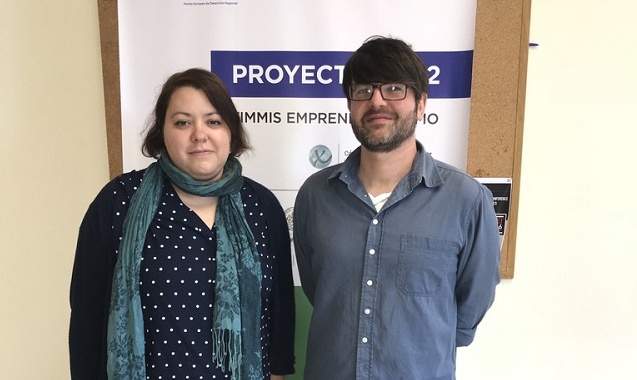We interviewed Celeste Calvet and Jorge Liras, from Inner Bloom, responsible for the dynamization sessions of the TIMMIS Teams during the 2017-2018 academic year.
What was the starting point to work with the TIMMIS teams this year?
We started working to help the students to develop certain skills, we started with communication and, especially, listening to the mutual understanding of oneself, of one another and of the whole, which in this case was the project that each team was developing.
How does that listening work?
We did some exercises working with role-playing allowing the students to analyze globally and also involve their other senses, so that they experienced in real time the importance of listening beyond the theory. We imagined a situation in which a partner did not do what they had to do, and we looked for ways in which this problem could be addressed. Jorge embodied this role, and the students took turns intervening and observing their body language, with which they developed skills to ask questions, to attend to nonverbal communication, their own and of others, and to become aware of the emotions underlying all communication. This kept us occupied for the first two sessions.
What was the distinguishing characteristic, from your point of view, of working with the TIMMIS teams?
The best thing for us was that, working with Estela Llorente, there was great flexibility when developing certain skills. In the formal educational frameworks there is a study plan and a work plan, but in this project, although there was an original plan, there was also a certain flexibility to observe the real needs of the project; because of this we could change, while still maintaining the methodologies and focus of what we were going to do.
Why is it so important to have that margin for change?
Personally, in a world like today, where nothing is certain and everything is changing, especially in the workplace, this is crucial for the growth and survival of the project. Hence our next four sessions: Design Thinking is structured around flexibility, because it is a creative process to capture the essence of a project in which the goal is to fail quickly, and often.
What is the Design Thinking methodology based on?
It is, in other words, to modify an idea in contact with the external world; its basis is empathy, to approach the people related to the project in such a way that it covers the widest possible range; from the average target to the extremes, from an expert to someone not interested. And, from there, interview them; so that based on this contact different perspectives can be acquired for the project. It is a test that delivers quick feedback, and its benefits imply that, either for free or very cheap, one can modify what is necessary, create with flexibility and know how to adapt to change.
Later, you prepared the two Storytelling sessions…
It had to be demonstrated to the teams that it was necessary to connect with the audience to communicate the product; one of the sessions was more preparatory and the other was the presentation by a team member in a much more personal way. Storytelling is the Number One competency that most companies try to develop; both internally to justify the existence of the firm and externally to customers and the target audience. Using a manual, they followed certain steps to create the story, connected to the thread of listening and empathy. Storytelling tries to connect with the audience through empathy, and the way to present it is not the traditional one, with data and numbers; but connecting the personal story and demonstrating why the project is important.
Finally, ‘The cloud challenge’…
It is a very quick teamwork exercise, about 18 minutes, which highlights the skills that each team member puts into the task, and you see how each team behaves when building a structure with unusual materials under time pressure.
What is your final assessment?
We are very happy, the biggest evolution we have seen is concerning the ability to listen, between individuals and at the group level the difference from the beginning of the sessions was very noticeable. In some teams in particular we saw a more mature and empathetic way of communicating, and we also noticed that there is a greater chance of success if the TIMMIS team includes a social approach in its ultimate goal.

